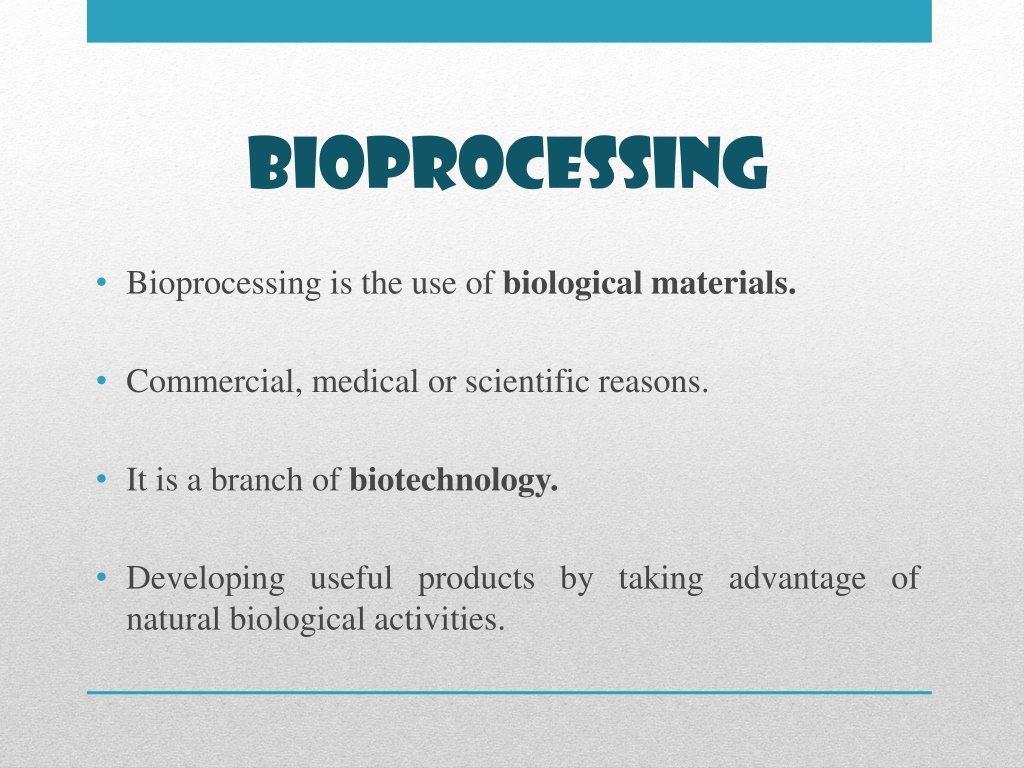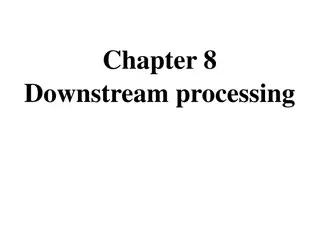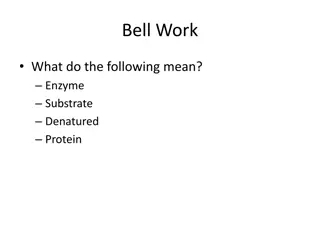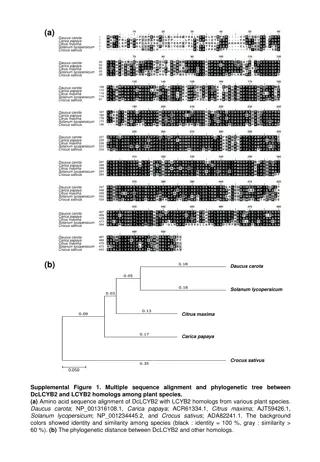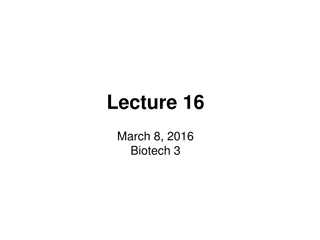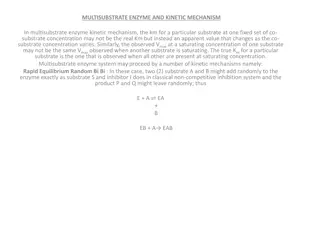Understanding Bioprocessing: Advantages, History, Applications, and Enzyme Use
Bioprocessing utilizes biological materials for commercial, medical, and scientific purposes, leveraging natural biological activities to develop useful products. This branch of biotechnology offers advantages such as low temperature, pressure, and pH requirements, along with renewable resources for raw materials and reduced energy consumption. With a rich history dating back to the first bioprocesses involving fungi, bacteria, and yeasts, modern bioprocessing now includes mammalian cells and various biocatalysts. Applications span across industries like foods, chemicals, and pharmaceuticals, employing microbial, animal, and plant cells to create new products and manage waste. Enzyme use in bioprocessing plays a crucial role, requiring enzymes to be specific, efficient, biodegradable, and functional in mild conditions.
Download Presentation

Please find below an Image/Link to download the presentation.
The content on the website is provided AS IS for your information and personal use only. It may not be sold, licensed, or shared on other websites without obtaining consent from the author. Download presentation by click this link. If you encounter any issues during the download, it is possible that the publisher has removed the file from their server.
E N D
Presentation Transcript
BIOPROCESSING Bioprocessing is the use of biological materials. Commercial, medical or scientific reasons. It is a branch of biotechnology. Developing useful products by taking advantage of natural biological activities.
ADVANTAGES Low temperature, pressure and pH. Renewable resources as raw materials. Less energy consumption.
HISTORY First products non commercial were beer, wine, vinegar, bread. First bioprocesses exclusively used fungi, bacteria and yeasts. Later mammalian cells. extended with the application of enzymes, Biocatalysts like insect cells, plants and animals were added in technologies but are less used in production.
APPLICATIONS Foods, chemical and pharmaceutical industries. Bioprocess operation make use of microbial, animal and plant cells and components of cells such as enzymes to manufacture new products and destroy harmful wastes. Bio products differs from industry to industry. E.g. amino acids (lysine, glutamate) carboxylic acid (citric and lactic acid)
Long tradition of enzyme use. amylases used by yeast for growth and ethanol In brewing to maltose production. in barley starch Enzymes that are stable and work quickly needed. For this reason, enzymes extracted from bacteria living in hot springs are preferred. ENZYME AND BIOPROCESSING
Reactions catalyzed by enzymes have commercial use. Enzymes should be; 1) Specific in their action 2) Extremely efficient 3) Biodegradable 4) Work in mild conditions
TYPES OF ENZYMES Intracellular enzymes - work inside the cell, in a stable environment (cytoplasm) Extracellular enzymes which are secreted and work in the surrounding environment and they are better.
BIOREMEDIATION Environmental compounds is widespread. E.g. oil spills contamination by hydrophobic Bacteria and fungi have the ability to grow on a range of hydrophobic materials, such as hydrocarbons and organic sulfur and nitrogen compounds. Bacteria convert these compounds to carbon dioxide.
PHARMASEUTICS Centralized European drug-approval system in 1995, recombinant proteins count for 36% of all new drug approvals. More than 100 new drugs and vaccines in market (mid-1970s ) More than 400 are in clinical trails.
